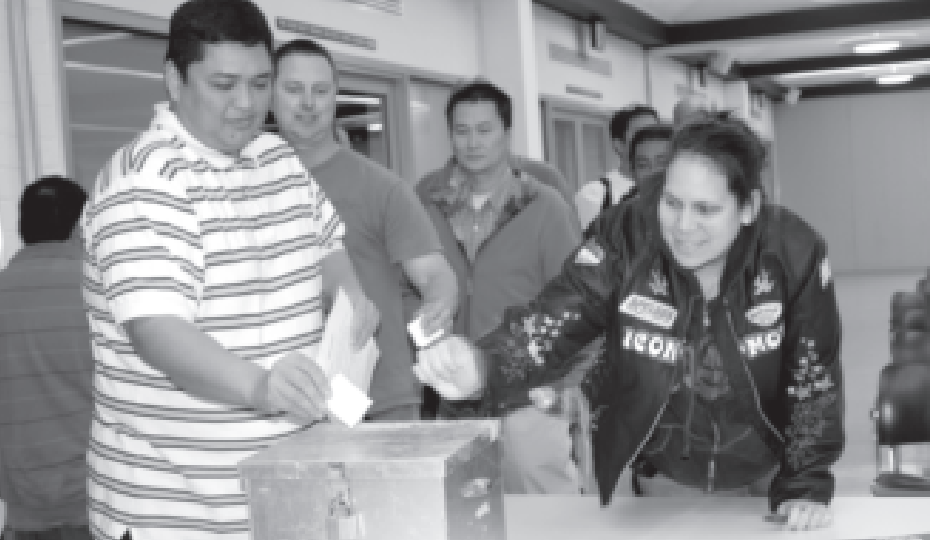Contract negotiations is a good example of ILWU democracy in action. Unit members meet to propose changes to their union contract and elect members to their negotiating committee. The union negotiating committee should include members from different departments and job classifications. While committee members may come from different departments or jobs, they should work for a contract that is best for the entire membership.
The union committee then meets with management, who may also have proposals to change the contract. In these meetings, one side will explain their proposals and the other side may accept, reject, or make counter proposals. As these meetings continue, both sides gain a better understanding of each other, problems are solved, and agreements are reached on many issues.
When the union committee and management feel they have bargained over all the important issues and have an acceptable contract, the union will hold membership meetings to explain the details of the settlement and take a vote. ILWU policy requires membership approval of any settlement reached by their negotiating committee on a new contract.
1 ILWU members prepare for contract negotiations at least six months before the contract expires. They hold membership or department meetings to propose changes to their union contract. These proposals address problem areas, try to obtain long standing goals such as job security, or seek improvements in wages and benefits. The unit will organize members to support the union.

The officers and stewards of Unit 4405 - Foodland Oahu hold a monthly day-long Unit Executive Board meeting in preparation for contract negotiations, which are schedule to start this fall.
2 Unit members meet to approve the final set of proposals and elect a committee of their fellow workers who will meet with management to negotiate a new contract. The committee is usually composed of Unit Officers and members who should represent the interest of all groups within the membership. This insures unity and solidarity among all groups within the Unit.
3 An ILWU full-time officer will serve as the spokesperson for the unit’s negotiating committee. At the first meeting with management, the union explains their proposals, and management may also introduce proposals. Each side will meet separately to discuss the proposals. They then meet together to accept, reject, modify, or drop the proposals.
4 This process of meeting and discussion over proposals by each side can take weeks or months. During this process, the original proposals have changed as both sides must compromise to reach an agreement. For example, the union may ask for a 6% wage increase, the company may counter with a 2% increase, and the final agreement may be a 4% increase.

Young Brothers Ltd. ILWU members from Hawaii, Maui, Lanai, Kauai and Oahu (right) meet with management representatives and Tim Ho of the Hawaii Employers Council.
5 In tough economic times, some employers may demand wage and benefit cuts in negotiations. The union may propose a joint union-management committee to find other ways to cut costs or require management to have a financial plan for recovery. The union may agree to temporary reductions but will require management to show proof of their financial condition. The union negotiating committee must keep their members united and informed during negotiations.
6 ILWU policy requires the final agreement must be approved by the members affected. The union will hold membership meetings to explain the agreement and take a vote. If a majority of members approve the agreement, then that becomes their new union contract. If the majority votes against the agreement, then the union may ask members if they are willing to strike or support other economic action to get a better agreement. The union will then go back into negotiations with management.

Unit 4412 - Servco Pacific Inc. ILWU members vote by secret ballot on theirtentativeagreementafteranexplantionbythenegotiatingcommittee and full discussionof the terms of the contract.
